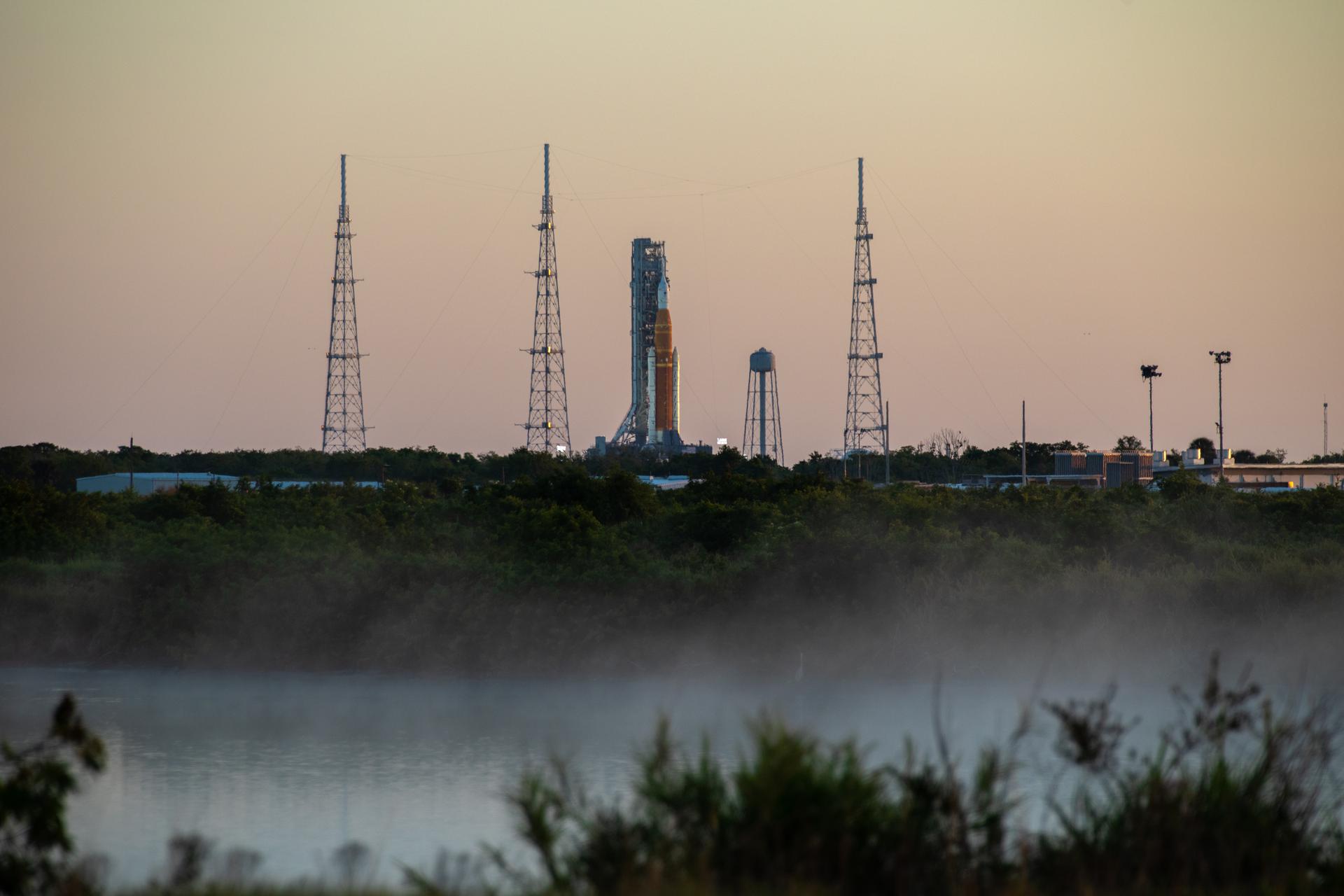STORY WRITTEN FOR CBS NEWS & USED WITH PERMISSION

NASA restarted a two-day dress-rehearsal countdown Tuesday for the agency’s new Space Launch System moon rocket after a series of unrelated glitches, mostly involving ground systems, blocked two earlier attempts to fully fuel the huge launcher to verify its readiness for flight.
The lone rocket-related problem — trouble with a one-way helium pressurization valve in the booster’s second stage — cannot be fixed at the launch pad and engineers will be unable to pump supercold cryogenic propellants into the stage during fueling operations Thursday as originally planned.
Instead, the team will concentrate on loading the SLS core stage with 537,000 gallons of liquid hydrogen fuel and 196,000 gallons of liquid oxygen Thursday morning, testing their ability to monitor and control the flow of propellants, verifying control room commanding and validating software through two terminal countdown test runs.
In one, the countdown will tick down to the T-minus 33-second mark before a recycle back to T-minus 10 minutes to test procedures that could be needed should a problem interrupt an actual launch countdown.
A second run will then will tick all the way down to T-minus 9.3 seconds, the moment before main engine ignition commands would be sent for an actual launch. At that point, the ground launch sequencer computer will stop the countdown and the test will end.
The original goals of the countdown test included loading both stages with liquid oxygen and hydrogen.
But it also “was about testing the Launch Control Center, all of the (ground support equipment), our sister control centers … and making sure that we are all able to operate in a day-of-launch environment,” said Charlie Blackwell-Thompson, NASA’s first female launch director.
Given the helium valve issue, the team “looked at what of those objectives can we go and accomplish without loading the upper stage. We want to get as much data as we can while we’re at the pad. The data will lead us and tell us what we need to do next.”
It’s not yet known whether an additional fueling test might be required at some point before launch, but the SLS upper stage, known as the Interim Cryogenic Propulsion Stage, or ICPS, cannot be loaded with propellants unless the core stage is filled as well.
In any case, the revised dress rehearsal countdown test began at 5:30 p.m. Tuesday as planned. If all goes well, core stage fueling operations will begin around 7 a.m. Thursday with cutoff targeted for 2:40 p.m.
While the upper stage will not be loaded with propellants, liquid oxygen and hydrogen will flow through launch pad transfer lines and into the ICPS plumbing to make sure the system is leak free.
After the test is complete, engineers will spend about 10 days readying the rocket and its mobile launch platform for the 4.2-mile trip back to the Vehicle Assembly Building where the helium valve will be replaced.
What happens after that is not yet known. NASA wants to launch the SLS on its maiden flight, boosting an unpiloted Orion crew capsule beyond the moon and back, some time this summer, but that will depend on what additional testing is required.
“This is the first flight of a program that is intended to last for years, to take us back to the moon … and one day to go on to Mars,” said Blackwell-Thompson. “And so when you think about that investment, and you think about the first flight, you have to expect that you’re going to learn things.
“You can’t have a first flight and not have some learning. And so what do you do when something happens? You adapt, you look at the data, you develop a plan and you let the data lead you to the next step. And that’s what we’re going to do in preparing this amazing vehicle to go fly.”
The Space Launch System rocket is the most powerful launcher ever built for NASA, a key element of the agency’s Artemis program to send astronauts back to the moon.
Equipped with two extended solid-fuel boosters and a core stage powered by four modified space shuttle main engines, the SLS rocket will tip the scales at 5.75 million pounds at liftoff and generate a ground-shaking 8.8 million pounds of thrust, making it the most powerful rocket yet flown.
The 322-foot-tall SLS was hauled out to launch pad 39B on March 18 and engineers began the first attempt at a dress-rehearsal countdown on April 1.
But before core stage fueling could begin two days later, the team ran into problems with fans needed to pressurize the rocket’s mobile launch platform, a routine step to prevent any free hydrogen gas from making its way into various compartments and posing a fire hazard.
The problem could not be quickly fixed and the fueling operation was delayed one day to April 4. Two more ground system problems caused additional delays before the helium valve issue was identified. Engineers then opted to press ahead Tuesday with a modified countdown.
from Spaceflight Now https://ift.tt/A9y4FDH
via World Space Info







0 comments:
Post a Comment